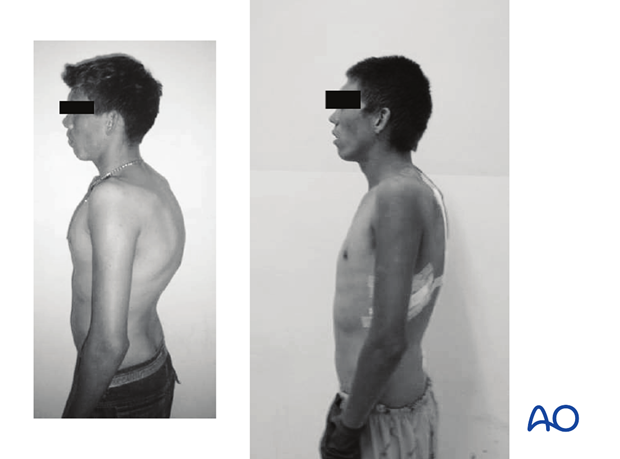Scheuermann kyphosis
Scheuermann kyphosis
Scheuermann kyphosis can generally be defined as a rigid thoracic deformity above 40° and endplate abnormalities at the apex of the kyphosis in adolescents and young adults.
Although there are no generally accepted diagnostic criteria, the three most commonly used are Sorensen's, Bradford's and Schlenzka and Arlet's criteria.

Diagnostic criteria
Sorensen's criteria
- Wedging of more than 5 degrees in three consecutive vertebrae, with typical endplate irregularities on a lateral radiograph.

Bradford's criteria:
- Irregular vertebral endplates
- Narrowing of the intervertebral disc space
- Wedging of 5 degrees or more in one or more vertebrae
- An increase of normal kyphosis beyond 40 degrees.
Schlenzka and Arlet criteria:
- Wedging of more than 5 degrees in one or more vertebrae in the thoracic or thoracolumbar region
- Endplate irregularities
- Disc space narrowing
- Increased thoracic or thoracolumbar kyphosis

Differential diagnosis
The main differential diagnosis which should be considered are:
- Idiopathic thoracic hyperkyphosis
- Neuromuscular
- Skeletal dysplasia
- Spinal cord tumor
- Infection
- Post-laminectomy kyphosis
- Post-traumatic kyphosis
- Connective tissue disorders
- Congenital kyphosis













